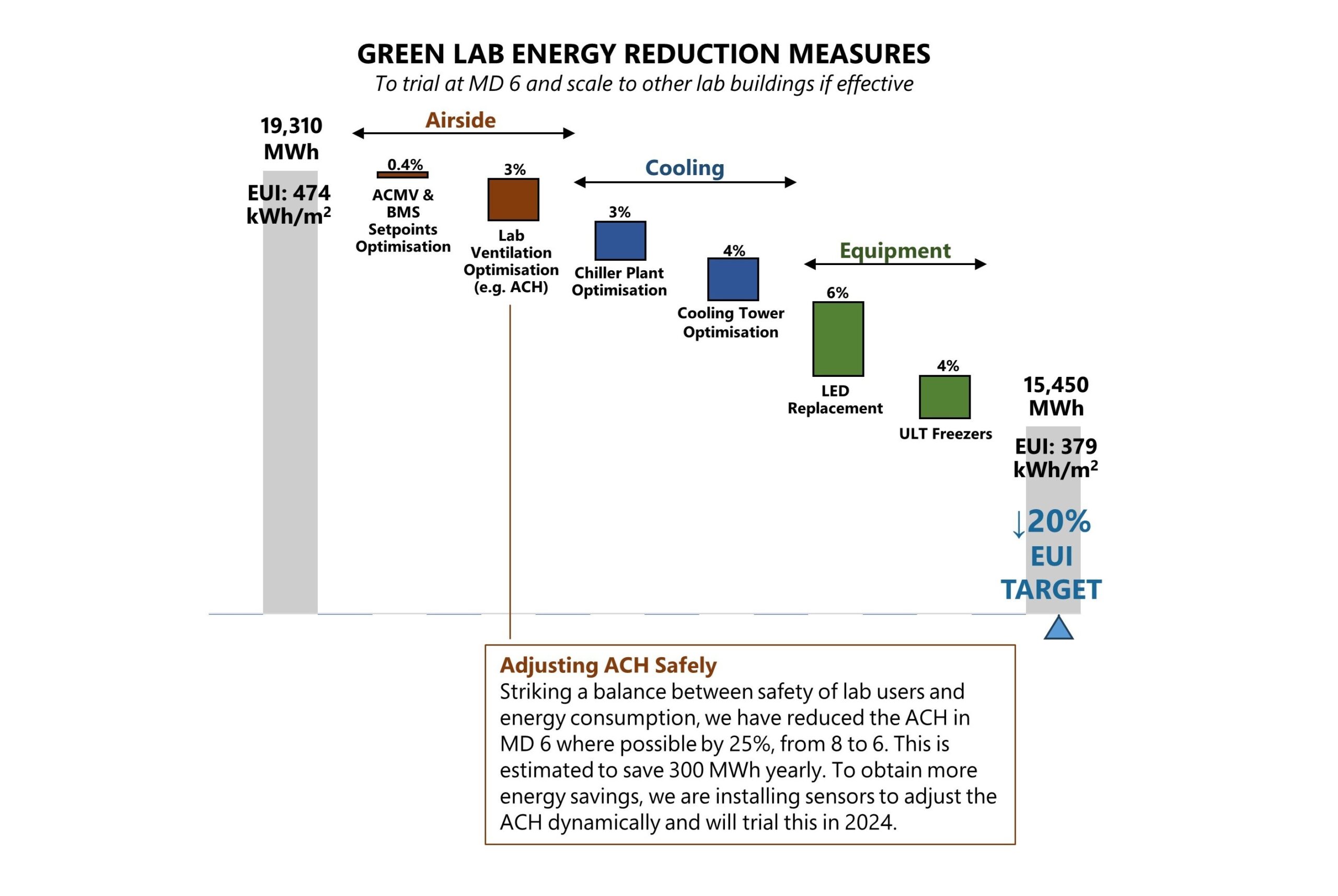CARBON NEUTRAL NUS
Decarbonising the campus by setting low-carbon design standards for buildings, significantly reducing energy consumption through energy efficiency, nudging resource-conscious behaviours, pivoting to onsite and offsite renewable energy, and lastly, procuring quality carbon offsets.
Our Approach

Our campus will continue expanding to support the mission-driven activities of the University. In a business-as-usual (BAU) scenario, we project that our electricity consumption will increase to 327 GWh in FY30, a 21% increase compared to the recent baseline of 271 GWh in FY19.
We are committed to mitigate and flatten this rise through energy reductions as a first priority. Through a suite of campus-wide and building type measures, we aim to reduce 87 GWh (27%) from BAU by FY30.
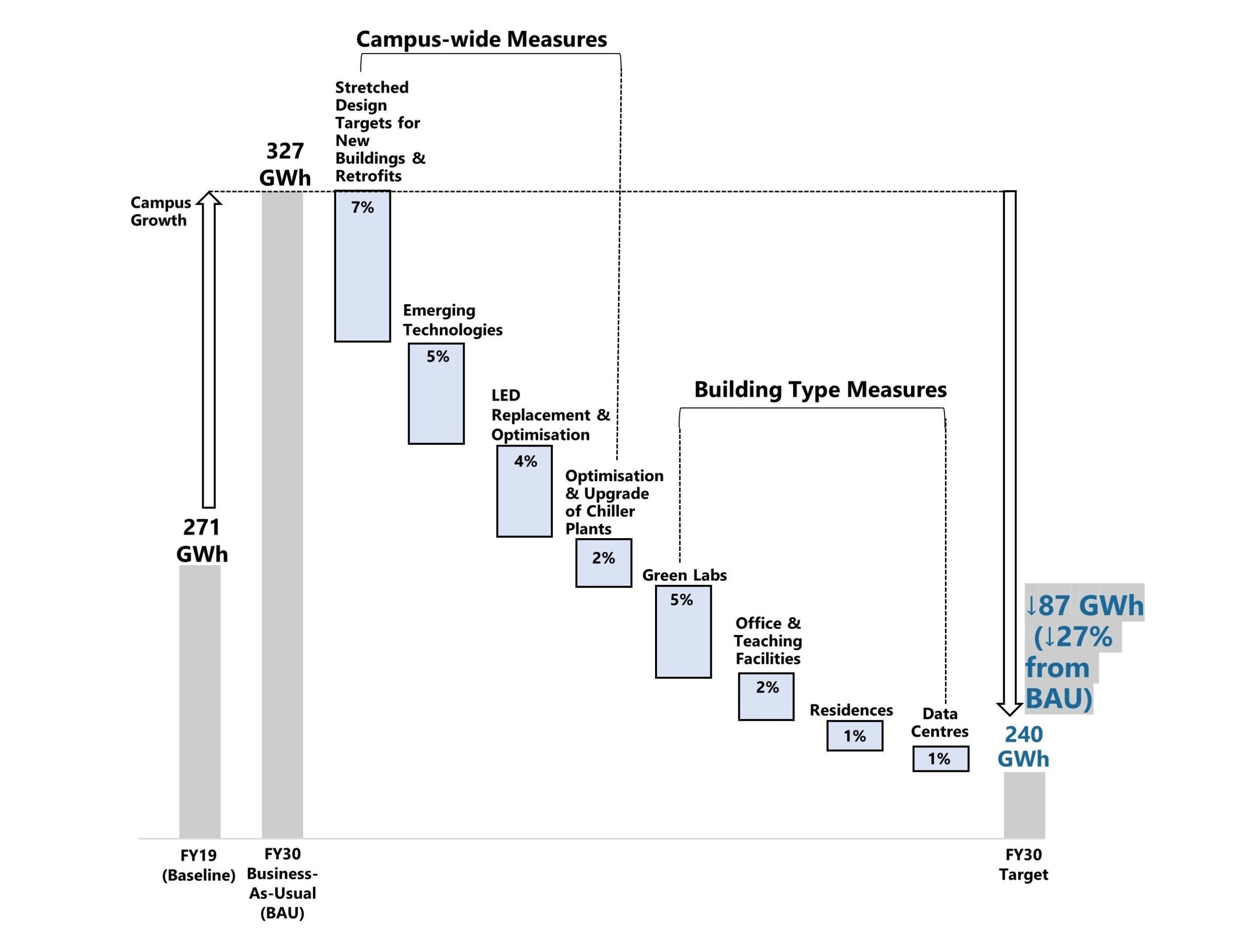
Through the suite of energy reduction measures we plan to implement, we are targeting to achieve a 20% reduction in energy usage intensity (EUI) by FY30.
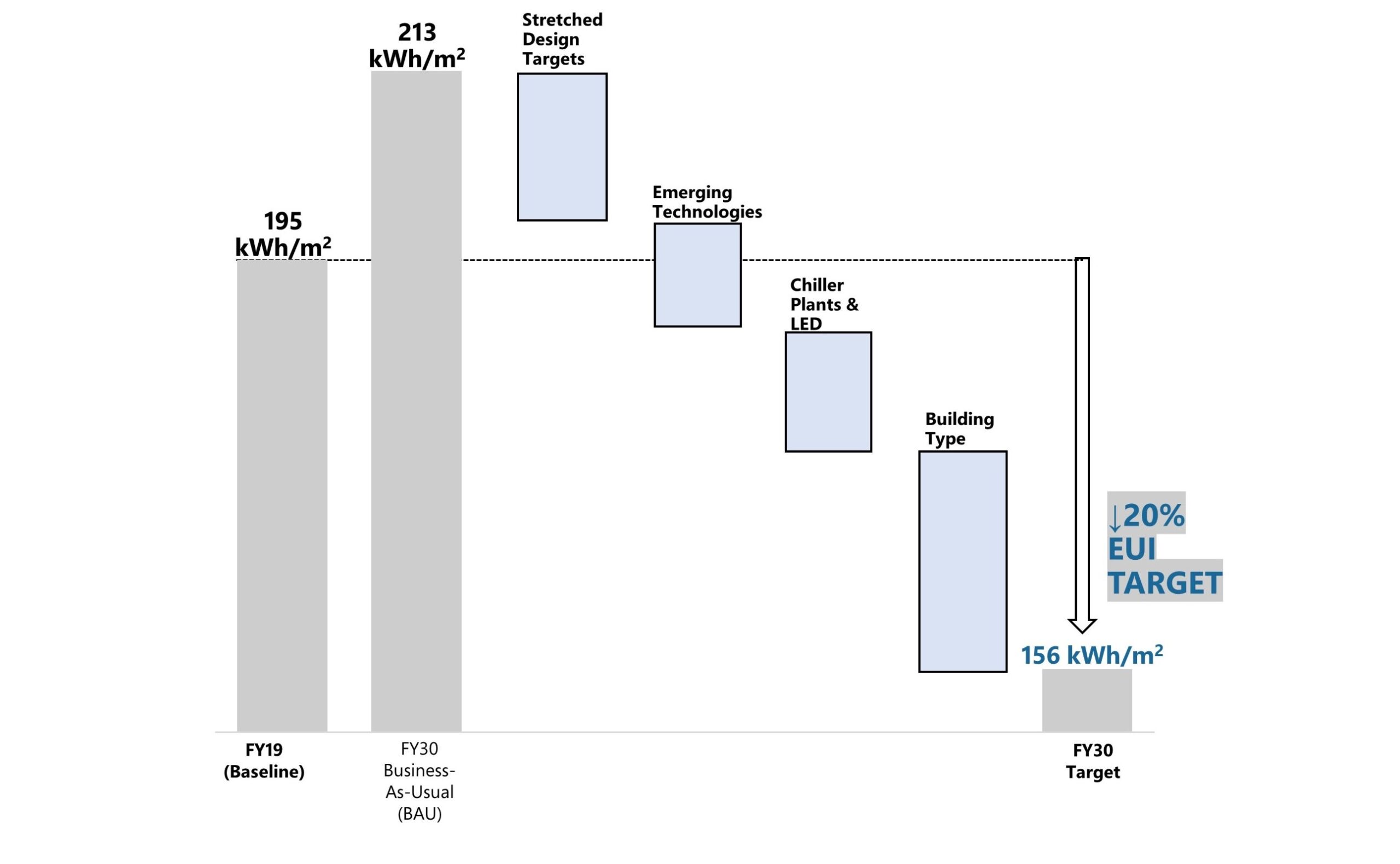
Amidst a growing campus where Scope 1 & 2 emissions are expected to increase from 113 ktCO₂e in FY19 to 135 ktCO2e in FY30, our utmost priority is to avoid and reduce electricity consumption as Scope 2 emissions accounts for 98% of our Scope 1 and 2 emissions. Through detailed studies in stretching our efforts to Redesign, Reduce and Replace, we estimate that we will abate 56 ktCO₂e, achieving a 30% reduction in Scope 1 & 2 absolute emissions and reaching 79 ktCO₂e in FY30.
To address Scope 3 emissions, we will develop a Sustainable Procurement Framework to integrate sustainability considerations into major procurement activities.
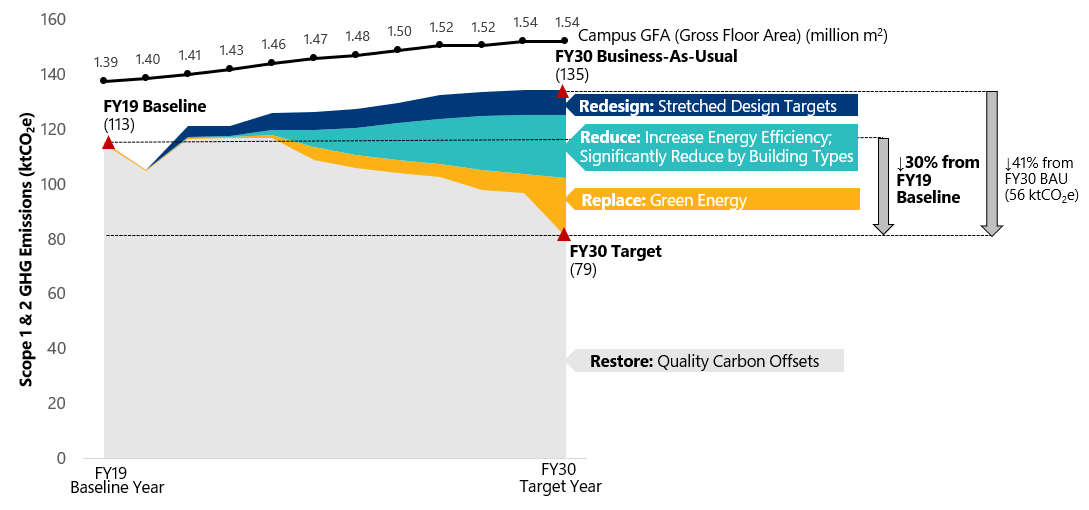
Progress Highlights
FY22
- Scope 1 & 2 emissions: +2% (115 ktCO2e), 8% lower than FY22 business-as-usual (126 ktCO2e)
- Energy Usage Intensity (EUI): +<1% (195 kWh/m2), 4% lower than FY22 business-as-usual (202 kWh/m2)
Redesigning Towards a Net-zero Energy Cluster
NUS is home to the first building cluster targeting net-zero energy comprising SDE 4 and newly completed adaptive reuse buildings, SDE 1 and SDE 3, achieving best-in-class energy performance.
SDE 1 & 3 – First Adaptive Reuse Buildings with Ultra-Low Embodied Carbon
Built in 1970s, SDE 1 and SDE 3 have been rejuvenated through adaptive reuse instead of being fully rebuilt from scratch, achieving high energy performance standards targeting net zero energy. These buildings have achieved ultra-low embodied carbon performance of 200 kgCO2e/m2, 80% lower than BCA’s reference value for non-residential buildings (1,000 kgCO2e/m2).
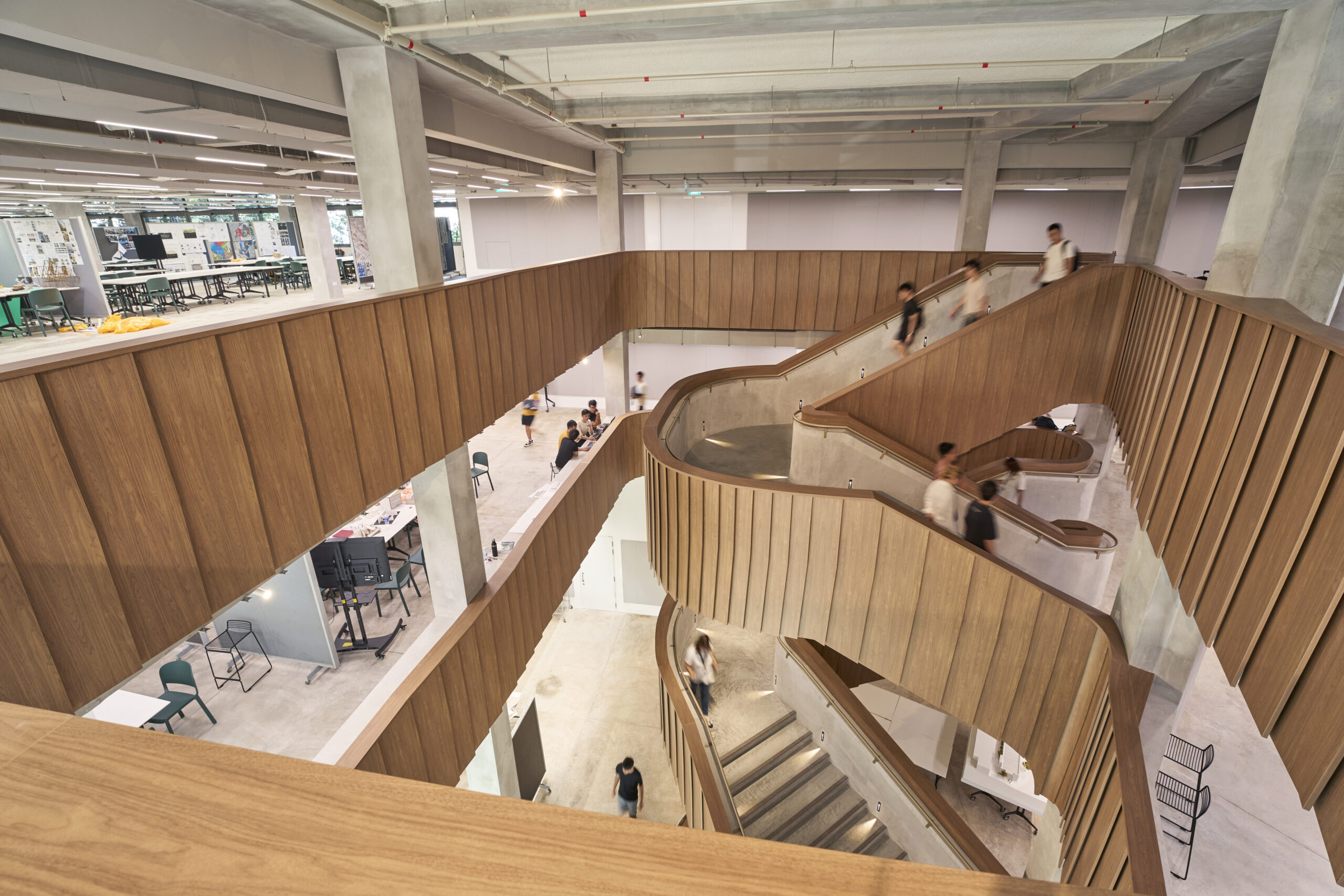
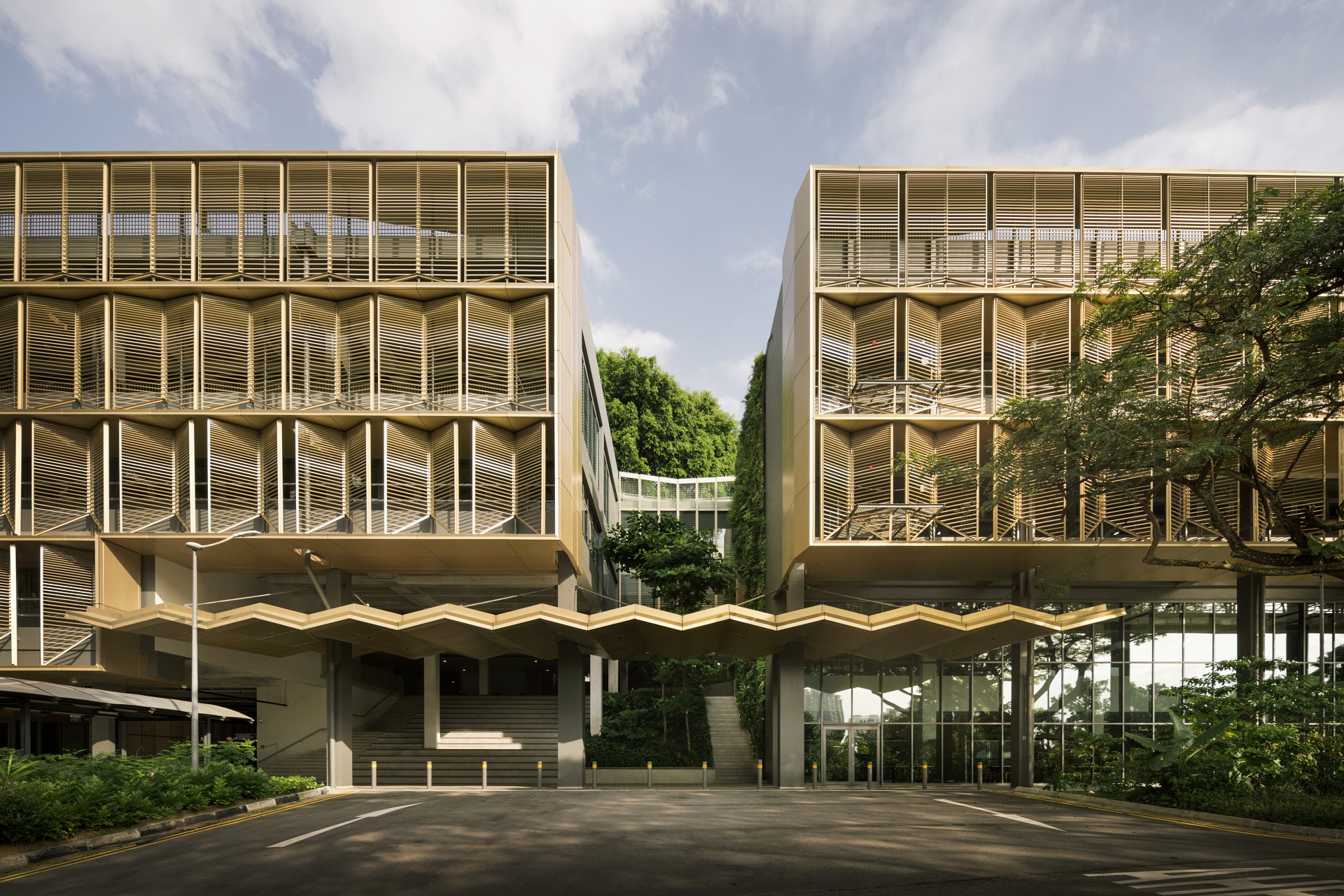
SDE 1 & 3 retained most of its building elements (e.g. walls, columns, floors; left picture) and refurbished specific ones for better energy performance (e.g. shading fins; right picture), achieving ultra-low embodied carbon performance of 200 kgCO2e/m2.
SDE 4 - New-Built Achieving Best-in-Class Positive Energy Performance
Originally constructed as a purpose-built net zero-energy building, SDE 4 is the first university building to achieve Green Mark (GM) 2021 in Operation Platinum Positive Energy, achieving an Energy Usage Intensity (EUI) of 44 in FY22 through passive and active design features and energy management, and generating 140% of its energy consumption from 1,200 rooftop solar PV panels.
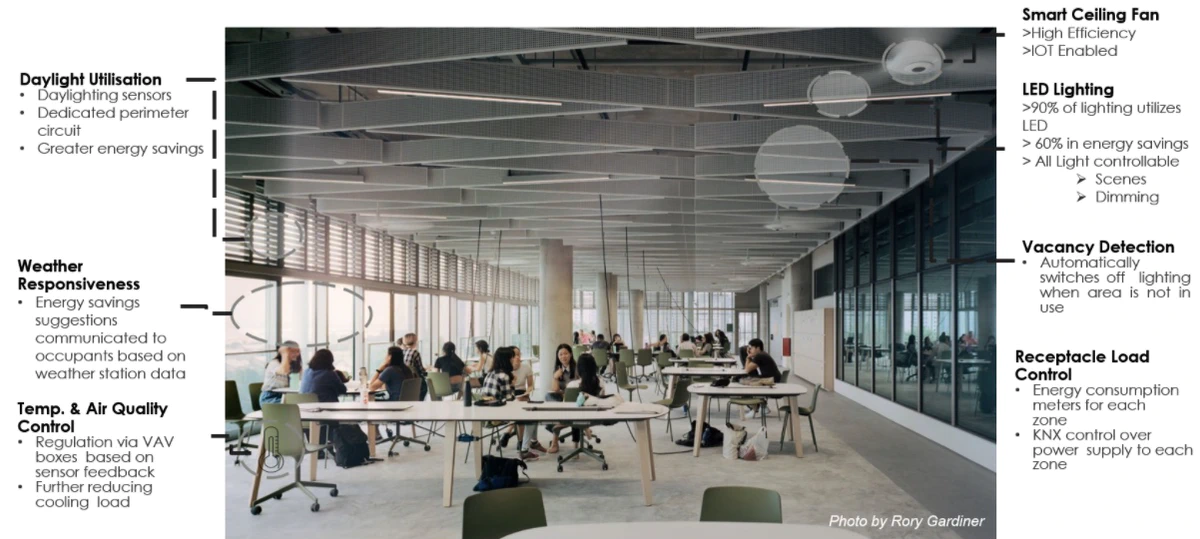
SDE 4 has various energy saving features that help to manage energy consumption in operation, such as vacancy detection that works with other sensors (e.g. carbon dioxide, temperature) to automatically switch off lights when the room is not in use.
Increasing Energy Efficiency by Upgrading Chiller Plants
Our efforts in upgrading chiller plants have been ongoing since 2012 with an overall efficiency of around 0.65 - 0.7 kW/RT, with the latest at Bukit Timah Campus in 2022 achieving an efficiency improvement of 36% (0.90 kW/RT to 0.58 kW/RT). We will continue to upgrade and optimize our remaining plants such as those at University Cultural Centre and I3/COM2.
Reducing Energy Consumption through Green Lab Measures
We completed a comprehensive Level 3 energy audit at a top energy consuming lab building, MD 6 in 2022 and developed energy reduction interventions with an aim to achieve 20% reduction in energy use. These interventions target key areas such as airside (e.g. adjusting air change rates (ACH) safely), cooling, and equipment (e.g. procuring energy-efficient Ultra-Low Temperature (ULT) freezers).
